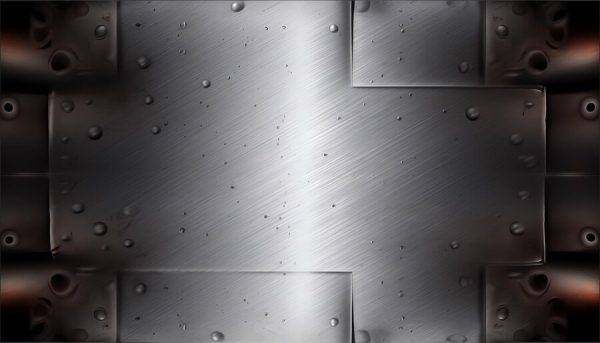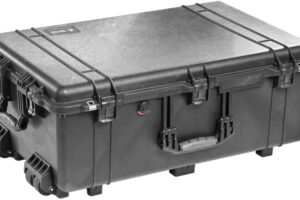
Steel is one of the most important materials in construction and manufacturing. It’s strong, durable, and adaptable to different needs. But not all steel is the same. You might have heard terms like “high tensile steel” and “mild steel” tossed around. Understanding the differences between these types of steel is key when choosing the right material for a project. So, what sets hardened steel apart from mild steel? This article will explain it in simple terms.
What is High Tensile Steel?
Strong steel is a high-strength, very hard material. Iron, carbon, and sometimes other elements such as manganese combine to give the material its strength. This makeup places the alloy at a high resistance to stress and hence much tougher than regular steel.
High tensile steel is a kind of steel that undergoes heavy loads and great pressure without breaking. Hence, builders use it for big construction projects like bridges and skyscrapers. Manufacturers also apply it to auto parts, heavy machinery, and tools that handle stress and strain every day.
Key Characteristics of High Tensile Steel:
- Strength: High tensile steel plate has great strength. It can bear heavy loads and resist damage even in tough conditions.
- Durability: This type of steel lasts a long time. It doesn’t wear out easily and can handle rough use.
- Stress Resistance: High tensile steel is great for projects where parts will face a lot of pressure or stress.
What is Mild Steel?
Mild steel is softer and more flexible than other types of steel, and people often refer to it as low-carbon steel.The carbon content is not that high in mild steel as compared to high tensile steel, hence easily manageable. It does not break while bending, cutting, or shaping, and this is the reason why mild steel is used for everyday purposes. It is used in building small infrastructures, making pipes and beams, etc. Not as strong as high tensile steel, it is much more versatile for general work.
Key Characteristics of Mild Steel:
- Softness: Mild steel can be easily shaped and cut, hence the ideal material where bending or molding is needed in a project.
- Malleability: Since mild steel is soft, it can easily be manipulated at construction.
- Cost-Effective: Mild steel is often cheaper than high tensile steel, making it suitable for projects with tighter budgets.
Key Differences Between High Tensile Steel and Mild Steel
Among others, the key differences between high tensile steel and mild steel are many. The differences may help guide one to the right choice depending on the demands of the project.
1. Strength
Among the main differences is strength. High tensile steel has far more strength when compared to mild steel. It is due to higher carbon content and heat treatments involved in its creation. High tensile steel can bear heavy loads applied on it with minimal chances of bending or breakage.
In contrast, mild steel is softer and more flexible. It can easily be bent, cut, and shaped. However, it doesn’t have the same strength as high tensile steel, so it is not suitable for heavy-duty jobs.
2. Carbon Content
The carbon percentage in steel plays a significant role in the strength and hardness of the material. High tensile steel contains an increased amount of carbon, thus rendering it stronger in relation to the purpose it serves. The carbon makes the steel harder and more resistant to damage.
In contrast, mild steel contains less carbon content. This is what makes it softer and hence more malleable. It is easier to work with but more prone to wear and tear over time.
3. Hardness
High tensile steel is far harder than mild steel. This feature of hardness makes it more suitable for projects that need strong and resilient materials. It resists dents, dings, and all forms of damage caused by everyday abuse. It can also show better resistance to extreme conditions like heat, cold, or stress.
Mild steel is softer. This, while making it easier to work, also makes it more prone to damage or wear.
4. Flexibility
Another key difference between high tensile steel and mild steel is in their flexibility. Mild steel is more pliable due to the softer nature of the material, making it an excellent choice for projects requiring bending or shaping. One can easily weld it as opposed to high tensile steel, which makes it more versatile for everyday construction.
High tensile steel, however, is much less flexible. Its hardness and strength make it more rigid, and this can be a disadvantage in projects that require a lot of manipulation. However, in projects that need materials to hold up under stress, this rigidity is a benefit.
5. Cost
It is normally more expensive compared to mild steel—on the issue of cost, high tensile steel. The reason for the price difference between mild and high tensile steels lies in added strength, durability, and a more complex process involved in its production. High tensile steel often needs special treatments, which increase its cost.
It’s much cheaper. This makes it the go-to choice for many general-purpose projects where cost is a factor. The ease of working with mild steel also helps lower labor costs, further adding to its appeal for budget-conscious builders.
6. Corrosion Resistance
Another key difference includes the corrosion resistance. While high tensile steel is strong and tough, it also becomes prone to rusting and corrosion when left untreated. Protective coatings or galvanization often become necessary to ensure that the steel does not degrade over some time.
Being softer, mild steel is even more vulnerable to corrosion. This basically means that mild steel needs some sort of protective paint, coating, or treatment to prevent it from rusting, especially in outdoor environments or areas where there may be moisture.
7. Weight
Weight is another factor. Since high tensile steel is much stronger, less of it actually needs to be used to provide support. This means that in large structures, it can be lighter overall, even while the actual steel itself is heavier.
On the other hand, mild steel can need more material to achieve the same strength; thus, though it is a lighter material, it can be heavier in greater amounts for larger projects.
Why Choose High Tensile Steel?
High performance steel is the go-to choice when strength is the most important factor. It offers several advantages that make it ideal for large-scale projects or environments where materials need to withstand heavy loads, stress, or harsh conditions.
Reasons to Choose High Tensile Steel:
- Superior Strength: Heavy-duty steel can handle extreme pressure and stress without bending or breaking.
- Durability: This steel is long-lasting, even when exposed to heavy use or challenging environments.
- Lightweight for Large Structures: Because it’s stronger, less material is needed, which reduces the overall weight of structures.
- Corrosion Resistance: When treated, high tensile steel resists rust and corrosion, making it perfect for outdoor projects.
For big construction jobs, like building bridges or tall buildings, high tensile steel provides the toughness required to maintain safety and stability. It’s also a top pick for creating parts that face a lot of wear and tear, such as those in vehicles or machinery. Overall, if your project demands strength and resistance, high tensile steel is an excellent choice.
Why Choose Mild Steel?
If ease of use and price are more important than strength, then a mild steel plate is the better choice. Its flexibility makes this type of steel a preferable option in many various general projects. It can easily be shaped, welded, and worked for all sorts of applications. It’s good at things that don’t require high strength.
Reasons to Choose Mild Steel:
- Cost-Effective: Mild steel often costs less, so it’s easier on budgets for common construction work.
- Flexible: This grade of steel is more easily bent and shaped than high tensile steel; thus, it provides a means of fabrication that is easier and quicker to execute.
- Versatile: It goes into everything from pipes and beams to construction material in general.
If one works on smaller projects or less demanding tasks, in general, mild steel becomes inexpensive. It is not only cheaper but flexible and easy to handle.
The End Note
The choice between high tensile steel and mild steel really depends on the needs of the project. High tensile steel is incomparable in matters concerning strength, durability, and resistance; hence, it is suitable for high-strength, heavy-duty applications. Mild steel is rather flexible and more pocket-friendly; therefore, it is perfect for construction works of a general nature. Knowing these differences will enable you to select appropriate steel for your work, balancing the strength with cost based on your project requirements.




